Text



















Wow what a race was that! Anyways, here is James Vowles/ Anthony Davidson Yaoi.
71 notes
·
View notes
Text

#james vowles#interview#can't believe someone chooses not to take a vacation#and go to the track at 7am to do marshalling
9 notes
·
View notes
Text
James Interview about strategy
This is from some german magazine, translated into English by deepL, and the original text has been lost because I'm stupid. dates is roughly after the 2018 season.
The work of a strategist sounds like a dream job. After all, you only have to work for 90 minutes every two minutes every two weeks.
That's correct (grins). Most of the time, the work is already done after the first stint. So it's not even 90 minutes. And seriously, what does work look like in the factory between races? First of all, it must be stated that strategy is not an individual's job. There's a whole team behind it. Of course, I'm in the forefront and am held responsible for the success and, of course, the failure at the same time. But I can count myself lucky to have a team of very talented colleagues behind me.
How big is your department exactly?
We are five people who deal with the topic of strategy. But we don't always all work on a race weekend at the same time. With 21 races, you have to divide up the tasks somewhat. Normally there are two of us at the race track, while the others stay at the factory and support us from the so-called Race Support Room. 18 years ago, I was all alone. And you honestly have to say that back then a lot of mistakes happened. We make fewer mistakes these days, but each little mistake is much more in focus. There are many more things that we need to consider in our work. It's not just about the amount of data that has increased dramatically. You just have to make a lot more decisions. And of course the competition has also evolved. I wouldn't be surprised if Ferrari and Red Bull look a lot like ours.
During our last visit in the Race Support Room there were more than five people were present.
The five people mentioned, including me, are only responsible for strategy. But they are not the only ones in the Race Support Room. A Formula 1 car produces data all the time. Some only look after this data, others are responsible for the tyres or the aerodynamics. Another group pays attention to what our opponents are doing and then relays this information to us at the track. Not all of this information helps you. Some of it is only there to help us better understand the behaviour of our opponents. Other information is urgently needed to make important decisions that influence the course of the race.
When so many people are feeding you information, your head must explode. How do you filter out what is really important for your decision at that particular moment?
We have a fixed protocol for distributing information. A lot of it doesn't go directly to me, but to other members of the strategy team who know how the race is developing. They then filter out what could be important for me. I have access to 18 different radio channels at the command post. Depending on the importance, some of them are regulated louder, others quieter. The human brain is polarised in such a way that attention is automatically heightened by certain signal words. So you don't have to understand everything in all the noise. For example, if someone says signal words like "James", "Box" or "Red Flag", then I can hear that out of all the jumble of sounds, even if it comes over a channel that has been turned down. Hearing can be trained and gets used to picking out what is important. If you're not used to that, you probably wouldn't understand anything in the confusion. We have been working together on the pit wall for 18 years. This has created a unique relationship of trust. For example, I don't question what Andrew Shovlin thinks, and it's the same the other way round. That reduces the complexity of communication considerably.
What exactly does the preparation for the race weekend look like? Do you already have a race strategy in mind when you go to the track for the first time?
The process starts much earlier. 14 weeks before a race, we have already thought a lot about what could happen if it is particularly hot or cold. Or how the tyres behaved the previous year. Together with the experiences of the previous races, you then try to make predictions about what will happen in different conditions. With that, you have to make your tyre choice for the race weekend. A few weeks of work already go into these preparations. Then you can let the work rest for a while. Only two weeks before a Grand Prix do you open the folder again and adjust the data with the latest findings. For example, they analyse how the tyres have behaved on the asphalt locations that are comparable to the upcoming race. The million simulation processes also take into account how the competition has developed in the meantime. One examines where one's own strengths and weaknesses lie. Then a special programme is created for the race weekend to get the maximum performance out of the car and the tyres. This objective can change from time to time. Brazil was the first race after winning the World Championship titles. That's when you think about whether you can gather information on Friday that will help us for next year. On a Thursday, when the weather forecast is also very specific, the drivers already have a clear picture of what we expect from the conditions and tyre wear on the long runs on Friday.
Apart from special weather conditions, how often do you have to change the original plan?
That is more often the case. However, they are not always major adjustments. Sometimes you just change something trivial like the lap of the first pit stop or the tire choice for the second stint. But sometimes it's also major. Bere things. For example, it can happen that you actually plan to start the race on medium tires in qualifying, but then the soft tire suddenly works much better than expected. That calls for almost radical changes. You then have to postpone a medium run to the third practice session and base qualifying entirely on the soft tire. For the drivers, that can be very disruptive when you change the planned program like that. In the environment in which we work here, something like that can cost us victories.
How many scenarios do you discuss with the drivers in the strategy meeting before the race?
We always hear about Plan A, Plan B or Plan C from Ferrari. We prefer to point out factors to our drivers that they need to consider at certain key moments of the race. We're usually pretty close to reality with our predictions about the race. But there are always things you can't plan for, such as a safety car or temperature changes. The drivers then have to react correctly. Ferrari usually gives its drivers four plans. We prefer to tell the drivers how much they have to watch out for the tires when they lead the race, or what happens if they have a bad start. As a result, they don't immediately panic if they lose places early on.
We'd like to know specifically, using a few races as examples, what was planned and when the strategy was changed.
First, two positive examples: the race in Hungary, with Hamilton's late stop, and Mexico, where Hamilton came extremely early for his only tire change. In Mexico, we just told the drivers that it could happen that the tires would suddenly last longer, but that they should be more prepared for a two-stop race. A one-stop would have required a very radical change in conditions. But that's exactly the change we identified very early in the data. Even before the first pit stops. The signals from our models were so strong that we probably would have trusted them even if we had been in the lead. That's a somewhat frightening idea. It's always more difficult to make such a decision when you're in the lead because everyone else can then react.
How was it in Hungary when Hamilton still brought Verstappen to his knees with the late extra stop?
The crucial thing happened before that: We forced Red Bull into a long stint. The plan was to put Red Bull under pressure early on, either with an aggressive one-stop strategy or with a second stop. The situation in the race was difficult to predict. No one could have guessed that the two leaders would be driving alone in the field without a chaser. That usually doesn't happen. But with the data on tire wear and the length of the Red Bull's stint at some point in the race we realized that the second stop was our best chance of victory. Lewis was hanging right in Verstappen's gearbox before that. but we didn't have much to lose either. It was great that it worked out that way in the end, and it was nice to see how the fans reacted after the race. But the crucial thing wasn't the second stop itself, but that we had put Red Bull in a weakened position due to the pressure beforehand. There was a short phase of two laps at the end when Max was able to increase his pace and we doubted a little bit, so we had to motivate Lewis as well. It's difficult for the driver. From the cockpit, he can only see what's happening 200 meters in front of him. He doesn't know the simulation that tells him: Everything will be fine! For a driver, it must feel terrible to suddenly be 16 seconds behind another car and someone tells you: Don't worry, you're going to win the race.
So you understand who he sometimes complains about decisions?
Absolutely.
From the outside, however, it looks like Bottas doesn't question the decisions as often and trusts the strategy team more.
Lewis sometimes asks questions, but he accepts a decision if you explain the situation to him over the radio.
Of course, we also have to address races that didn't go optimally. We picked the chaos at Hockenheim and the race in Singapore, where Mercedes lost to Ferrari and Red Bull despite having the faster car.
Hockenheim went badly? I don't remember that at all (laughs). No, just kidding. A lot of things went wrong at the German GP. It's a good example of what happens when you suddenly fall out of a structured plan. We made a lot of mistakes. But the crucial mistake happened just before the end. During the final safety car phase, practically anyone could have won the race with a pit stop at the right time. But I'd lost confidence because I'd made mistakes earlier in the race. We know that our models and simulations aren't always right and that intuition is sometimes called for, but when a few mistakes happen in a row, you start to have doubts. You don't know what to believe anymore. And in a rain race, there are usually no good simulations. There is a lack of information. You don't know where the transitions are between rain tires and intermediates. You have to learn very quickly. I can proudly say that our team is usually very strong in such conditions because we stay calm and make good decisions as a result. But at Hockenheim we made a few clear mistakes that caused us to fall behind.
What went wrong during Lewis Hamilton's chaotic pit stop?
That was very unusual for this team. The problem was that we'd called Valtteri in for a tire change just before, while we were tracking his progress on the GPS tracker. Suddenly we see a Mercedes with a torn front wing in the pit lane, but the color of the camera didn't match Valtteri. It was Lewis. It took us eight seconds to make sure the tires that were ready were not mounted on the car, because that would have meant an immediate exclusion. You can't put the wheels of one car on another. At the same time, we had to make sure that Valtteri didn't stop in the pits behind Lewis, but drove through. Fortunately, he realized himself that he would lose positions and stayed out of his own accord. But the wrong car in the pits paralyzed us for a mo. ment. In this decision-making process, all I had to do was turn around for a moment. Then I would have seen immediately that it was far too wet for slicks. It took me ten seconds to realize that we had to put on the intermediates. The mechanics had already got the slicks when we told them not to let the car go without intermediates. That delayed things even more. It looked terrible from the outside. And it felt awful, too. Fortunately, all radio messages and GPS data are recorded. Then every single decision is analyzed together afterwards. After Hockenheim, there was an extremely long debriefing session in which everyone openly explained what they had done wrong, how the mistakes had happened and what we should do differently in the future.
Can you prepare at all for such extreme situations?
There were a few things that we could have done 100 percent better. We also questioned our way of working. From time to time, you have to look at things with a little more distance. And you can't rely solely on things like the weather forecast, you just have to look out for yourself. The whole thing has opened our eyes a bit.
And what didn't go according to plan in Singapore?
We had thought that we had an advantage over the distance with the tires. But our problem was that Leclerc slowed down so much at the beginning that we never knew how fast he could really go. I had the 2010 season finale in Abu Dhabi in mind when Webber lost the championship to Vettel because of an early pit stop. We had three cars behind us in the pit stop window. Our fear was that Leclerc would pick up the pace at the front as soon as we pitted and we would then lose a lot of time in traffic. We were so stuck in our thinking that we missed some important signs. For example, Verstappen called in on the radio and said his tires were no longer good. We made a crucial mistake in our simulation: we didn't consider what would happen if the driver in the lead was driving slowly but not taking good care of his tires. We had simply applied our own tire management model to Ferrari. Our approach would have been to keep as many cars as possible in the pit stop window. But Leclerc managed the pace in such a way that gaps opened up. So we didn't know how fast he was really capable of. We didn't know that he was already driving close to the limit. What makes this case particularly painful is that we brought Valtteri in so he wouldn't lose his position. And then we had to brake him in so that the order of our cars didn't change.
You contacted Bottas directly over the radio. What has to happen for you to talk to the drivers?
That always depends on the circumstances. Normally, I shouldn't be heard at all. When I do intervene, it often means that a driver has to act for the good of the team. In the case of Singapore, Valtteri had to make sure Albon stayed behind him. Last year, for example, I also intervened in Sochi when it came to swapping places in a race.
Do you consult with the race engineer or Toto Wolff beforehand?
Of course, this kind of thing always happens in consultation with Toto. I also inform the race engineers before I talk to their drivers. But something like this doesn't happen out of the blue. Let's take Sochi last year: We told Valtteri via the race engineer that he had two laps to overtake Verstappen. When he didn't manage that, we took over. So it didn't come as a surprise.
Does it bother you that the radio message "Hey Valtteri, it's James..."' has gained such notoriety?
No.
Hamilton decided on his own authority to delay the stop in Austin.Does something like that annoy you?
The drivers are always allowed to say if they don't agree with an instruction. We then talk about it again and make it clear when the decision is final. In this case, Lewis tried to stay out one more lap. That was detrimental to him. His race was affected by that. But there is a reason why we did not react here: This was a race in which the world championship title would be decided. I've seen this happen several times now, where drivers have a problem with team control when it comes to securing a championship. You can't try to restrict the driver in the process. We made that mistake in Abu Dhabi in 2016. We didn't want to repeat that here.
You had already briefly mentioned the final of the2010 World Championship in Abu Dhabi, where Sebastian Vettel became world champion against Mark Webber and Fernando Alonso. Alonso was on the radio at the time and tried to warn the team that they were fighting the wrong opponent. How would they have acted?
Fernando didn't say: I'm not coming in for a pit stop. He just said what he thought would have been the right strategy. When our drivers don't agree with a decision, they don't just say no. Instead, they give information that they don't agree with. In Lewis' case, it can happen that he says before a pit stop that his tires are still okay. But he only does that because he thinks he has information that the team doesn't have. And that's the right thing to do. The same applies to Valtteri. We'd even be disappointed if the drivers didn't express their opinion.
Would you agree that strategists make Formula 1 more boring with their detailed predictions and simulations?
I've been doing this job for 19 years now. My opinion is that this season we have seen some of the best Grands Prix I can remember. I include races where we didn't look good. What made Ös terreich, Hockenheim, Budapest or Spa so great was the joint battle of drivers and strategy against other teams. And they did it in such a way that the races had spectacular endings that no one could have foreseen. We see that teams operate at a high level and cars fight directly against each other closely on the track, which is a new evolutionary stage. In the past, teams simply ran circles around their opponents thanks to strong drivers, pit stops and strategy. But that kind of thing doesn't happen anymore. I hope that this Formula One year will be remembered not only for our historic title win, but also because we produced some spectacular races.
But wouldn't it be even more interesting if strategists had to listen more to their instincts?
It's true that our forecasts are getting better and better. But it also leads us to take more risks. I agree with you that spectators don't want to see strategists settling the race among themselves. They want to see heroes on the track. performing an incredible overtaking maneuver. That's why people love this sport. A race with less information-for example, because of rain on Friday-may be more unpredictable and therefore more interesting. But I don't think that's a reason to take information away from the teams.
The DTM has introduced a radio ban. The drivers now have to act more independently. What do you think of that?
For me, Formula 1 is the pinnacle of motorsport. That means that it's not individuals who fight against each other, but entire teams. We at the track are just the tip of the iceberg. Behind us are more than a thousand other people who support us. The entire team pulls together to win races in the end. That makes the whole thing unique. That's why I think it's positive. Not because I'm a crazy engineer who loves doing the job, but because I think it's a team sport.
6 notes
·
View notes
Text











When I say I have a favorite boy band I mean:
68 notes
·
View notes
Text













2014 Austrian Grand Prix
He should not change to his traveling pack before the end of the celebration.
22 notes
·
View notes
Text
merc era vid list
youtube site search now is shit and shit , so I made a link list for James' merc era videos. not all the videos he appears in are in the list, the video must be interesting enough (i'm tired of watching him talking an hour-long strategy) you're welcome!
Previews & Debrief
22.08.12 W13 Challenges, Closing The Gap & New Foods! | 2022 Akkodis F1 Season Debrief
22.26.10 Upgrades, Brake Changes, Podiums & More! | 2022 United States GP Akkodis F1 Race Debrief
22.13.04 Overcuts, Safety Cars & More | 2022 Australian GP Akkodis F1 Race Debrief
21.09.12 Headphones, Damage & More | 2021 Saudi Arabian Grand Prix F1 Race Debrief
21.10.11 First Lap, Pit Stops & More | 2021 Mexico City Grand Prix F1 Race Debrief
21.28.10 Overcuts, Atmosphere & More | 2021 United States Grand Prix F1 Race Debrief
21.16.09 P19 to P3, Car Damage & More | 2021 Italian GP F1 Race Debrief
21.02.09 Wet Tyres, Aquaplaning & More | 2021 Belgian GP F1 Race Debrief
21.01.07 Upgrades, Second Stops & More | 2021 Styrian GP F1 Race Debrief
21.05.05 Sensor Issues, Fastest Lap Fights & More | Portuguese GP F1 Race Debrief peer pressure about food.
21.18.03 Sandstorms, Car Handling & More | 2021 F1 Test Debrief
20.16.09 Safety Car Restarts, Smoking Brakes & More! | 2020 Tuscan GP F1 Race Debrief 4:12
20.09.09 Lewis' Penalty, Best Pizzas & More | 2020 Italian GP F1 Debrief pizza!
20.05.08 Punctures, Pit Stops, Vibrations & More | 2020 British GP F1 Debrief
20.15.07 Tyre Offsets, Floor Damage & More! | 2020 Styrian GP F1 Debrief 6:25
20.13.05 PETRONAS Retro Race Review – F1 Mexico Grand Prix 2019 Is this your loft ??
20.29.04 PETRONAS Retro Race Review - Hungary F1 Grand Prix 2019
20.22.04 PETRONAS Retro Race Review - Bahrain F1 Grand Prix 2014
19.07.08 2019 Hungarian Grand Prix F1 Debrief & what happened
19.18.07 2019 British Grand Prix F1 Debrief analyzing toto's heart rate.
19.01.05 2019 Azerbaijan Grand Prix F1 Debrief he got a promotion.
19.27.03 2019 Australian Grand Prix F1 Debrief he got a cold.
18.15.112018 Brazilian Grand Prix F1 Debrief Why are you so mean to your coworker?
18.22.10 2018 United States Grand Prix F1 Debrief... with a Difference! Paul Ripke what have you done?
16.28.07 Full throttle down the Hockenheim straights! | Nico Rosberg on the German GP
~
Tech Part
16.23.06 F1 2016 Explained: How have the 2016 tyre rules changed race strategy?
13.09.07 Grand Prix Insights - Seat Fit
12.11.11 Grand Prix Insights - Race Overall
20.14.10 Everything You Need to Know About F1 Esports!
21.31.05 INSIDE STORY: Mercedes' Strategic Masterclass | 2021 Spanish Grand Prix
18.13.05 Inside Story Of How Mercedes Won The 2018 Azerbaijan Grand Prix
~
Interview
22.14.10 Driving Ambition - the journey to drive a Formula One™ car part1 part2 part3
22.24.07 "On a aujourd'hui moins de marsouinage que Red Bull ou Ferrari. Ce n'est plus un problème" need fr ip.
22.29.04 "It was UNFORGETTABLE to ride with you!" 🙌 | Lewis Hamilton and Valentino Rossi swap seats! 1:09 He wears a motorcycle suit.
20.15.12 LH44xVR46: Behind the scenes of the ultimate rideswap
19.04.08 An incredibly deserved podium today for James
19.18.07 LIVE at the F1 Esports Pro Draft 2019 star from1:57:26
19.21.06 “Fans, it’s James”
18.12.09 F1 in Schools World Finals Singapore 2018 - Day 4 - Awards Celebration star from 2:25:06
~
ads
17.10.06 The Road to Montreal (Full HD)
15.31.07 Tumi and MERCEDES AMG PETRONAS F1 Team
~
other
21.02.08 Took a Champion’s drive to fight back to P3!
19.27.05 James, it’s Lewis... We need to talk!
18.05.11 Lewis Hamilton Behind the Scenes: Day in the Life of an F1 Champion
20.08 08 “James, it’s James”
19.19.12 2019 F1 Race Debriefs: The Bloopers!
18.24.12 Santa Spotted at Mercedes F1 Factory
9 notes
·
View notes
Note
Go and continue your James Vowles work please 🙏🏻
oh didn't expect someone was waiting🥹 I do have tons of contents, maybe some updates in the next few weeks <3
0 notes
Text
September 16, 2016

@ MercedesAMGF1: Welcome to another episode of #FollowATeamMemberFriday! Meet James, our Chief Strategist! He'll be sharing his day with you today, so check out 'My Story' for exclusive photos and behind the scenes insight!

@ MercedesAMGF1: We spend a lot of time together and what makes work special is the trust we all share for each other.

@ MercedesAMGF1: Best Pit stop view 📸👍🏻

@ MercedesAMGF1: Amazing city, amazing views. And where else can you go to work at 15:45 in the afternoon 👍🏻🕰😊

@ MercedesAMGF1: Best seat in the house, time to take a seat
6 notes
·
View notes
Text








LIVE at the F1 Esports Pro Draft 2019
20 notes
·
View notes
Text
WORKING AT BRAWN GP (James part)
2/14, 2011
Name: James Vowles Job Title: Race Strategy Engineer Age: 30 Lives: Oxford Hobbies: Motorbikes, Motorsport, Mountain Biking
Q. What studies did you complete before you worked in Formula One?
A. I wasn't entirely sure where I wanted to go in life when I was younger. I can say I was studious as most of my school reports stated James is clearly very intelligent, when he applies himself! I completed most of my education in Geneva at an International School and at about 16 years old, I started to dedicate myself a bit more, particularly enjoying Maths, Physics and Computing. This led me to return to the UK to study Computer Science at the University Of East Anglia as a stepping stone until I figured out where I was destined. I had done my fair share of karting to this point and loved motorsport. When I was growing up Sundays were mostly spent watching Formula One races with a friend who truly was like a brother to me. Until that point I considered motorsport a far fetched dream and after sending out CVs to all the F1 teams, with zero positive results (including one CV actually sent back to me!), I decided to dedicate my life to both getting into and then being successful in F1. I started working weekends at Snetterton Race Circuit, which was near my University, with Formula Ford and GT teams, building up both experience and contacts, until I finished my degree in 2000. From there, I was one of 20 students lucky enough to be selected for the first Cranfield University MSc in Motorsport Engineering course. The course was a baptism of fire, with the other 19 students being of extremely high calibre, all with Engineering backgrounds, most of who now work in either F1 or GP2. In September 2001 I graduated with a distinction, picking up a Prodrive award for the design of a school racing car.


Q. Where did you work before Brawn GP?
A. In terms of motorsport, I started where all budding engineers should – scrapping rubber from GT racing slicks in a cold garage on a Sunday morning! When I was still doing my MSc in 201, Ray Rowan, who ran successful FIA Sportcars and F3 teams, gave me my first engineering role. I started as the Data Engineer for the F3 team and after a few months Ray felt comfortable enough to let me run the programme and engineer the car
from then onwards. That same year I became the Senior Race Engineer on their Le Mans programme, taking the Pilbeam LM675 car to Le Mans. In 2001, I applied for an Assistant Race Engineer position with British American Racing, and whilst I wasn抰 accepted for that role, I made enough of an impression for a new role to be created, and my first goal of entering Formula One was achieved. In 2002, I started work on a Race Strategy system and shortly afterwards joined the Race Engineering department and started travelling to the races. My role has expanded over the years combining Race Engineering duties, Friday car running with Anthony Davidson as our third driver in 2004 and 2006 and of course Race Strategy. In 2008 I was privileged enough to start working with Ross Brawn and we haven looked back since.



Q. Describe your job on a day-to-day basis?
A. Prior to each race, I gather all the historical data, patterns (traffic, overtaking, track changes) and team performance data. Brawn GP has a number of custom simulation packages which we run to ensure that we gain a good understanding of the running plan for the weekend and the estimated tyre performance, highlighting any potential problems and considerations. During Friday we will build a picture on our competitors performance, tyre usage, weaknesses and strengths. I work closely with the senior race engineers to ensure we get the most out of our car and modify the run plans if required during sessions. The Friday data then allows us to determine a qualifying plan including which tyre compounds and in what order and just as importantly, the final qualifying fuel figure. We always create several plans, depending on where our competitors are relative to us in each qualifying session. On Sunday morning Ross and I sit down and discuss all of the potential race scenarios and plan actions for various events such as safety car deployment and accidents. This planning is the key to solid race strategy as we may only have a matter of seconds to react to incidents on track. During the race, the decisions we make are what order to run the tyre compounds, what the next stop lap will be, what to do in case on safety cars on every lap, who we are fighting, and what we can do to defend or beat them. We are continuously updating the driver with his targets, both lap time and position to allow them to manage their tyres and the gaps to other cars around and ultimately their pace. Following the race I will analyse all of the decisions and data gathered from the event, understand what we did right, and what we could have done differently and improved on. This analysis is then used to build a further understanding with regards to our competitors for the following event.
Q. What do you like about working in Formula One?
A. Formula One is unique – it's my passion, my hobby, my life. Outside of the race weekend, the entire team is trying to work harder, faster and better than the nine other teams to ensure that by the next race, we do a better job than them. The business solely
focuses on a single event, which lasts around two hours roughly every other week, where the result of hard work and dedication can be seen the world over. The other aspect is the reactivity of Brawn GP and how quickly we can react to other competitors, rule changes, and problems. We are able to draw, manufacture and run components that were first discussed only a few weeks ago.
Q. What's the best thing about working for Brawn GP?
A. For me, it's all about the people you work with, the team work, the development. The race engineering group has been together for a long time and is very close which makes for a great working environment. I think it抯 fair to say the engineers spend nearly as much time together as we do with our respective partners! The other reason is Ross Brawn who has changed the way we work together as a team. It's a privilege to work alongside him during a race weekend.
Q. What’s the most challenging aspect of your job?
A. The first challenge is making a strategic decision during qualifying or the race, sometimes in just a few seconds, based on as little or as much data you have available at that time. The difference between making a good or bad decision can be as much as several positions by the end of the race and therefore having the most accurate data possible at all times is key to this. The second is managing driver expectation and performance over a race weekend. During the race the goal is to work with the engineers to give the driver targets to hit, manage his pace, and keep an eye on your competitors to understand both their performance and usage of tyres.
Q. What has been the best moment of the 2009 season so far?
A. There have been several. The first would be when we took the BGP 001 car to Silverstone watching Jenson drive a few laps to ensure all was well before we shipped the car to its first test. The relief from where the team was just a few months ago was indescribable. However my best moment in 2009 was, without question, Monaco. A one- two result from Jenson and Rubens is an incredible achievement. More specifically from a strategic perspective, we had the right strategy, putting the cars first and third on the grid. We managed a difficult tyre situation and reacted quickly to the dynamic race to bring the cars home first and second. At the end of the race I was standing just next to the podium, Ross Brawn just behind me with his elbows on my shoulders watching Jenson running down the straight after leaving his car in Parc Ferme. It's a memory that will stay with me forever.
3 notes
·
View notes
Text









some random cute gifs <3
sources: LH44xVR46 | 2020 Italian Debrief | 2021 Mexico Debrief | 2020 Tuscan Debrief
50 notes
·
View notes
Text





The Long interview from F1 Racing 08.2023
PDF
#interview#james vowles#I think they are currently the best racing magazine in the UK#please go buy a magazine or online subscription in order to support them
21 notes
·
View notes
Text
72 HOURS IN BUDAPEST WITH JAMES VOWLES
Date: 2022/7/27 Source: 404 (Sorry)
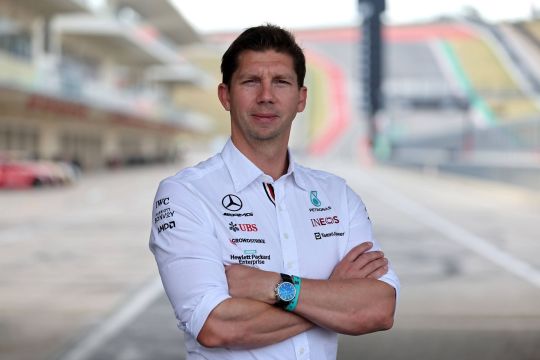
James Vowles, a key figure on the Formula One race circuit, quite literally breezes through Budapest as the Mercedes-AMG Petronas Formula One Team strives to be named the World Constructors’ Champion for the eighth year in a row. As one of the team members responsible for navigating the road to the top of the podium, however, he does manage to sneak in some local sights and a decadent dinner at The Ritz-Carlton, Budapest. Read on to discover his secrets to race-day success and learn about the culinary competition on this year's itinerary.
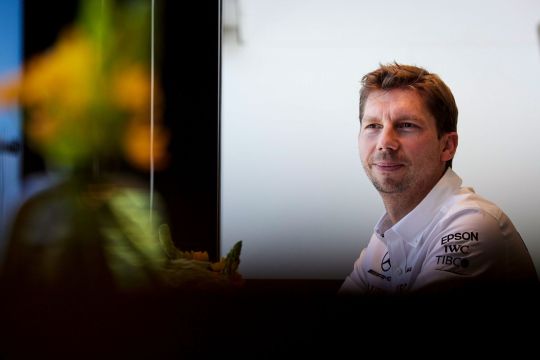
WHAT IS YOUR MOST MEMORABLE MOMENT AT THE HUNGARIAN GRAND PRIX?
“Mine actually stems back to 2006 [when I was working with Honda]. We'd had some successful races and been on the podium a few times, but we hadn't won anything up to that point. Budapest is a track that is very difficult to master. I know it looks simple because it's small and there aren’t that many corners, but it's incredibly difficult to get right for the drivers and engineers. You also have rain that comes in and out. 2006 was my first-ever win as an engineer, as well as the team's first win. It's something that means a huge amount to me because we had to fight for it. It wasn't given to us on a plate. We really had to make the right decisions at the right time. A number of cars had a number of incidents, and we came through the field and did the right thing, so Budapest rests strongly in my mind as a result of that.
The second was with Mercedes in 2013, which was Lewis Hamilton’s first year with us. It was at that point we realized how special he was in Budapest. We didn't have the fastest car—Red Bull was by far the leader that year—yet Lewis was able to win that race fair and square. He did it because [Budapest] is just where he feels comfortable. It's a track he loves, so it holds a strong place in my heart because of that.”
"So often in life, you celebrate on your little podium and then bam, you're straight onto the next thing ... Whether the result is good or bad, we always pull together as a team."
DO YOU HAVE ANY PRE-RACE RITUALS?
“I do. I have to have socks for the current year. For example, the Tommy Hilfiger socks [that are part of the official Mercedes-AMG Petronas Formula One Team 2021 uniform], they have to be of that year. They have to be Tommy and they can't be anything different, which I know sounds strange, but that's me!
I also always go out to the pit wall with my water bottle, take it back, empty some water out and put in a Berocca, which is a vitamin pill. It’s something I've always done and always will do. Then, I'll go to the grid. There's a specific time when I set my IWC watch to the exact time of the day. It's just something I've always done to make sure that everything is in sequence. These are odd things to be admitting, but I always make sure I walk through the same side of the garage. Normally, it's Valtteri Bottas’ side, but I don't mix and match. They're all strange things I do out of habit, but they've worked!”
WHAT FUELS YOU ON RACE DAY?
“I'm really particular on what goes into my body. I’m generally on the pit wall for qualifying and the race, which is about two hours. You have to hydrate to the right level. If you over-hydrate, you're just desperate to go to the loo in the middle of the race, which is the most distracting feeling in the world! So, step one is actually controlled hydration throughout the day. Step two is I always have a banana and an apple straight after qualifying and the race. There is a tremendous amount of adrenaline that goes through your body and you have to put food in to absorb it to a certain extent.”
DO YOU HAVE A FAVORITE WAY TO CELEBRATE POST-RACE IF YOU WIN?
"The trackside team that you see at every race spends more time together than they do with their respective families. We use celebratory occasions to pull together as a team, to strengthen the team, and to create a bond. After Silverstone, we all went across to the motorhome, every single engineer, and we took five minutes to breathe, relax, and enjoy the moment. So often in life, you celebrate on your little podium and then bam, you're straight onto the next thing ... Whether the result is good or bad, we always pull together as a team.”
WHAT DO YOU LOVE MOST ABOUT VISITING BUDAPEST?
“There are two things that not just myself, but a number of us like. First, there is a dedicated running track along the Danube. Then, you can run around Margaret Island in the middle of it. Everyone is there exercising, which I love because you miss that in a lot of other city centers. The second is that there are literally hundreds of restaurants that I would recommend, be it in the old town or the city center. I've never really had a bad meal in Budapest.”
ARE THERE ANY MUST-SEE SIGHTS?
“You can’t go wrong cycling or driving from the city center [where The Ritz-Carlton, Budapest is located] to Heroes’ Square. You’ll see some of the most incredible parliamentary buildings and hotels along the way.”
IF YOU HAD ONE DAY OFF IN BUDAPEST, WHAT WOULD YOU DO?
“I'd go to the water park. I've never been there, but it looks amazing! I often find myself sitting outside in 34°C [93°F] heat looking up at the hills and all you see is people amusing themselves in splashing water.”
WHAT IS THE BEST MEAL YOU' VE EVER HAD IN BUDAPEST?
“The best meal would be the one that I had with The Ritz-Carlton. I was fortunate enough to be invited to a dinner that they hosted and you can't really compare—it’s just the highest level of quality that you could possibly have. After that, there's a steak restaurant called La Pampa. It's covered in cowhide and it’s truly amazing as well. You get the choice of either Hungarian, Argentinian, or U.S. beef. For what it's worth, the Hungarian beef is my favorite. I’ve been there enough times that I've tried everything! I also had dinner on a boat while sailing up and down the Danube, which was quite a unique experience. Nothing, however, tops a chef looking after you for the night at The Ritz-Carlton, Budapest.”
IS THERE A TRADITIONAL HUNGARIAN DISH OR BEVERAGE THAT YOU’D LIKE TO TRY?
“There are a lot of Hungarian dishes, goulash being the most well-known, but I haven't really tried any of them in depth. I find that the cuisine in Budapest is quite international. I've had curries there—our team has a fascination with curries. This year, there's an engineer's curry-off that's going to take place in Hungary. If things go wrong, we’ve got a few weeks to recover in August!”
11 notes
·
View notes
Text

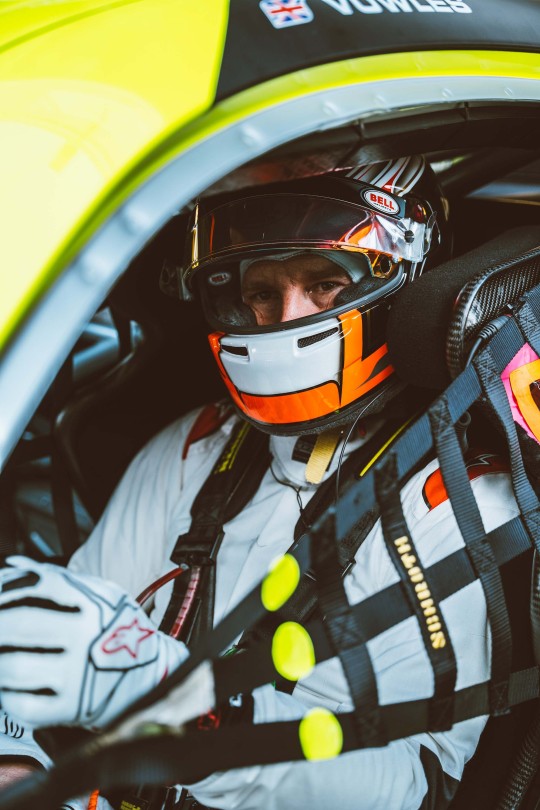
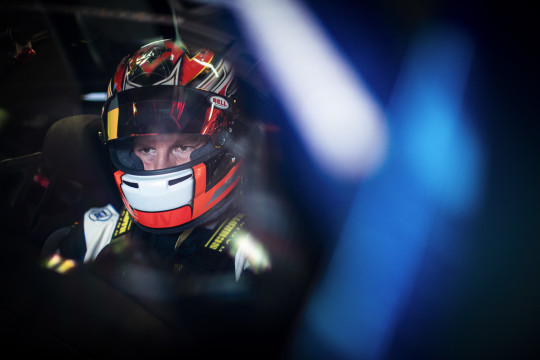
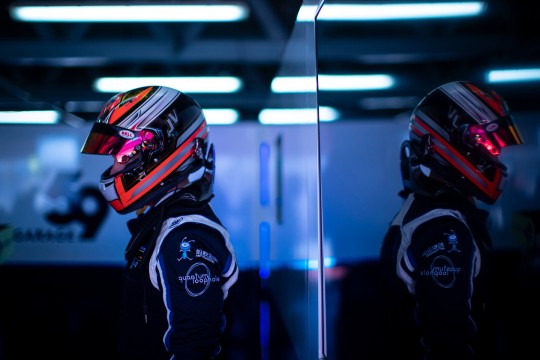
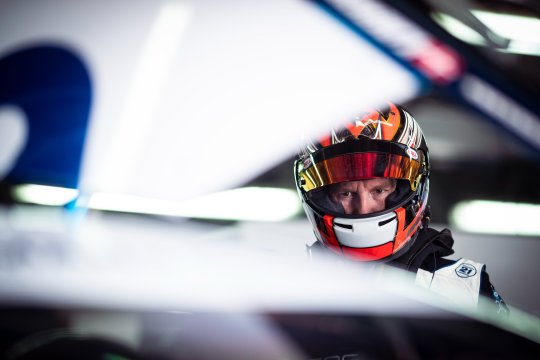



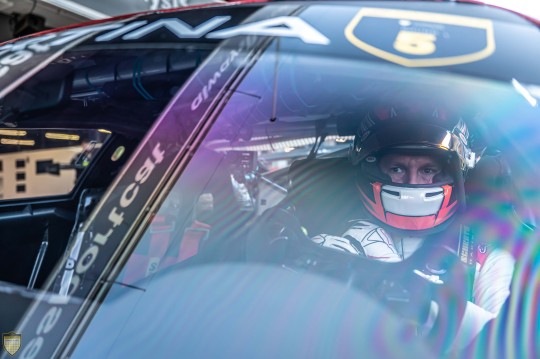

"If you ask me how to do my job within the world of Mercedes, I've done it for 20 years, I've never lost my confidence. "But if you ask me, am I still able to drive a GT3 car fast? If I was to answer in truth, you really do wonder if you've lost the ability to do it. I've spoken to a few drivers and it turns out this is a very common theme between them. "So you have to go out and actually prove to yourself that you're not a complete buffoon in order to get your confidence back.
—— James talks about driving race cars in his spare time, DEC 4, 2022 |German version (slightly different)
6 notes
·
View notes
Text
here we go again.
Glad James is trending now. Over the next few weeks I'll start backing up all the interview magazines and photos I have of him, and Merc engineers. but note that I won't be posting anything that I didn't get from a public source, I think I'll take those with me to my grave.
3 notes
·
View notes
Text

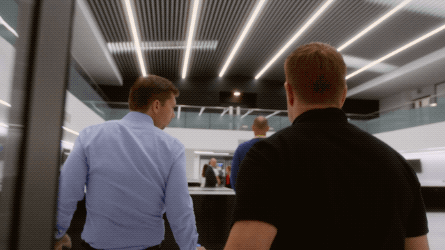
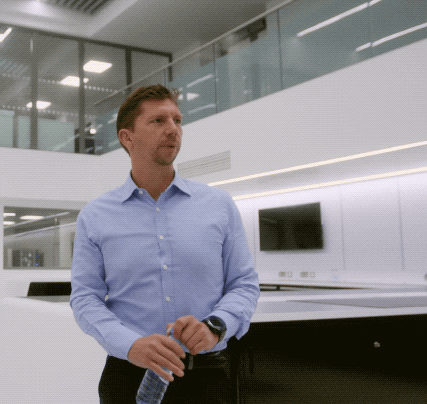


source
7 notes
·
View notes









